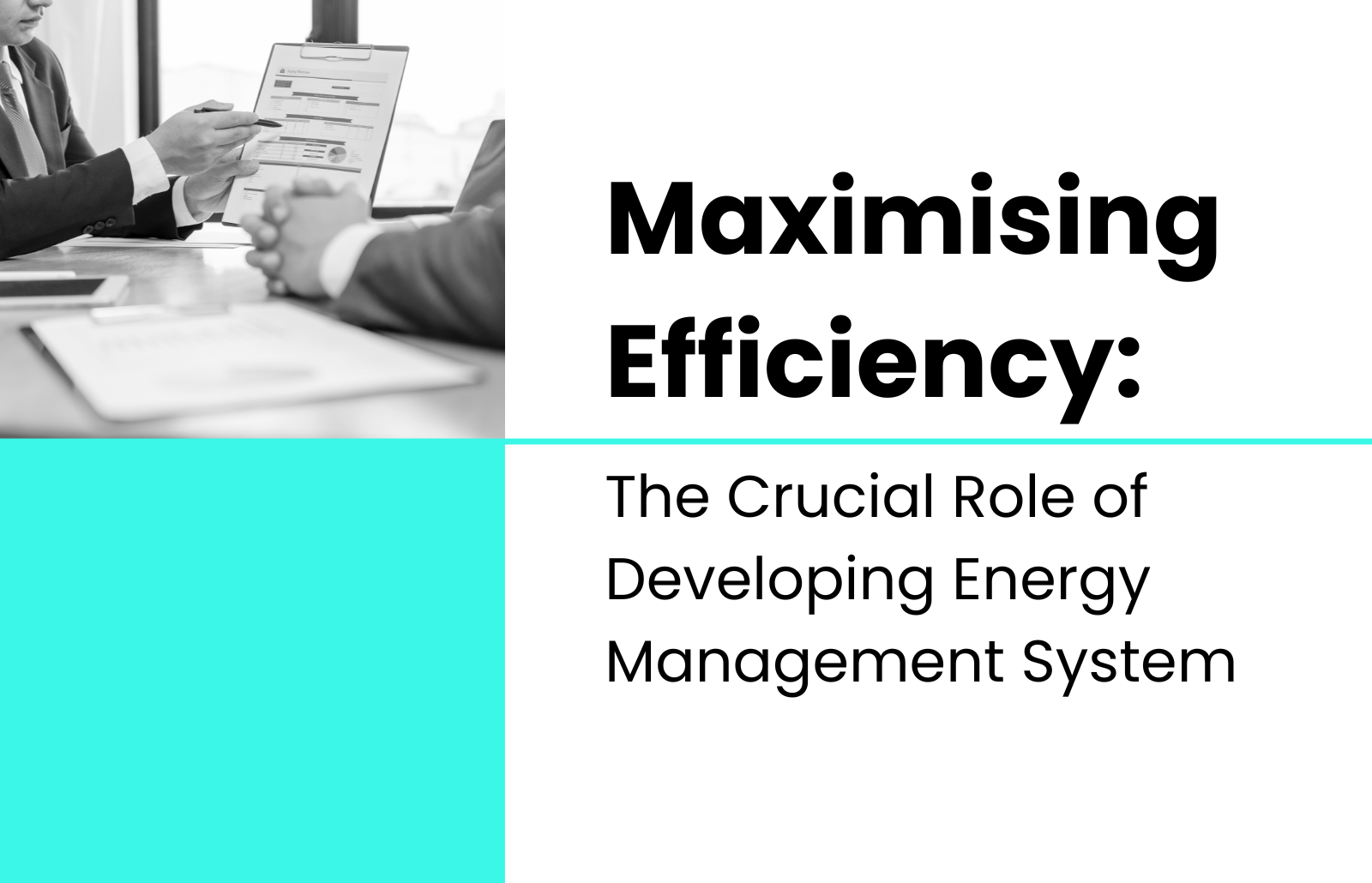The way we utilise energy is undergoing a profound transformation. Gone are the days of blindly consuming electricity, unaware of its cost and environmental impact. Enter the era of smart energy management systems (EMS), innovative solutions empowering us to take control, save money, and safeguard the planet.
In 2021, the level of carbon dioxide (CO2) was much higher than ever before. It increased by 6% from the previous year because of energy combustion and reached a whopping 36.3 billion tons.
This increase in CO2 matches the growth in the world’s overall economy, which went up by 5.9%. This connection between CO2 and economic growth is the strongest since 2010, when the world was recovering from a big financial crisis. Back then, CO2 emissions increased by 6.1%, while the economy grew by 5.1%. These fluctuations raise the need for an Energy Management System. Let’s delve deeper into it!
Definition of Smart Energy Management Systems (SEMS):
Smart Energy Management Systems (SEMS) are intelligent systems that optimise and automate energy consumption, integrating data from various sources to gain insights and control energy use in real-time. A system uses both hardware and software working together to give instant information about how much energy is being used. It covers electricity, gas, water, and more, helping businesses make smart choices to reduce waste and be more efficient.
Energy Efficiency: A Comprehensive Approach Across Diverse Sectors
Getting energy efficiency right means tackling it from all angles. Let’s take a closer look at how it can be put into practice across different sectors:
1- Residential Sector – Maximising Home Energy Efficiency
In the residential sector, implementing energy-efficient practices can lead to significant reductions in energy consumption. Key strategies include integrating smart home technologies like programmable thermostats that optimise energy use based on unique user habits. Smart Energy Systems, combined with energy star-rated appliances, improved insulation for reduced energy losses, etc., can maximise energy efficiency in residential areas.
2- Commercial Sector – Driving Sustainability and Cost Reduction:
Energy efficiency plays a pivotal role in the commercial sector, contributing to sustainability goals and cost reduction. Heating, ventilation, and air conditioning (HVAC) systems are major energy consumers in the commercial sector. Upgrading to high-efficiency HVAC systems can yield significant energy savings while maintaining comfortable indoor environments for occupants.
Regular energy audits help businesses identify inefficiencies and areas for improvement in their energy usage. By pinpointing where energy is being wasted, companies can prioritize investments and initiatives that offer the greatest return on investment in terms of energy savings and cost reduction.
3- Industrial Facilities
Industrial facilities benefit greatly from the implementation of SEMS (Smart Energy Management Systems). These systems revolutionise operations by providing real-time insights into production processes. With SEMS, factories, and plants can optimise their energy consumption, identifying areas for efficiency improvements to streamline operations and reduce costs. By tracking energy usage in real-time, industries can make data-driven decisions to enhance productivity while minimising environmental impact.
4- Smart Power Grids
Smart power grids are integral to modernising energy infrastructure, and SEMS play a crucial role in their optimisation. These systems facilitate the seamless integration of renewable energy sources like solar and wind power into the grid. By intelligently managing energy distribution, SEMS ensures a balanced and efficient flow of electricity, reducing wastage and enhancing overall grid resilience.
This optimisation not only promotes sustainability but also helps mitigate the challenges posed by fluctuating renewable energy generation, ensuring a reliable power supply to consumers.
Why Smart Energy Management is a Crucial Need
Smart energy management is crucial for several reasons:
-
Customer Retention in a Rising Energy Cost Landscape
As energy costs steadily climb, retaining customers becomes a major challenge for utilities. Offering smart EMS solutions acts as a powerful value proposition, demonstrating your commitment to their financial well-being. By empowering customers to manage their energy consumption and reduce costs actively, you foster trust and loyalty, creating a win-win situation.
-
Unlocking the True Potential of Energy Saving
Traditional energy management methods often fall short, leaving pockets of inefficiency untapped. Smart EMS goes beyond simple monitoring by analysing real-time usage data, identifying patterns, and suggesting actionable insights. This empowers users to make informed choices, like utilising appliances during off-peak hours, automatically adjusting lighting and temperature settings, and optimising heating and cooling systems. The result? Drastically reduced energy bills and a significant carbon footprint reduction.
-
Efficiency
By optimising energy usage, smart energy management systems can reduce waste and ensure that energy is used more efficiently, leading to cost savings and environmental benefits.
-
Resource Conservation
With the increasing demand for energy worldwide, it’s essential to conserve resources. Smart energy management helps in better utilisation of available resources, reducing the strain on finite energy sources like fossil fuels.
-
Environmental Impact
Traditional energy production methods often have significant environmental consequences, such as greenhouse gas emissions and pollution. Smart energy management promotes the use of renewable energy sources and reduces overall energy consumption, thereby mitigating environmental impact.
-
Grid Stability
Balancing energy supply and demand is crucial for the stability of the power grid. Smart energy management systems can help in load balancing, peak shaving, and demand response, ensuring grid stability and reliability.
-
Championing Sustainability for a Greener Future
The climate crisis demands immediate action, and the residential sector plays a crucial role in curbing carbon emissions. Smart EMS serves as a potent weapon in this fight. Promoting energy efficiency and responsible consumption helps us collectively transition towards a more sustainable future. This aligns perfectly with your company’s values and demonstrates your commitment to environmental stewardship, further enhancing your brand image.
-
Integration of Renewable Energy
With the increasing adoption of renewable energy sources like solar and wind power, smart energy management becomes essential for effectively integrating these intermittent energy sources into the grid while maintaining reliability and stability.
-
Data-Driven Decision Making
Smart energy management systems utilise data analytics and real-time monitoring to provide actionable insights into energy usage patterns. This data-driven approach enables businesses and utilities to make informed decisions about energy efficiency measures, infrastructure investments, and demand-side management strategies.
Overall, smart energy management is needed to address the challenges of energy sustainability, environmental conservation, and grid reliability in an increasingly complex and interconnected world.
Key Components of SEMS (Smart Energy Management Systems):
-
Sensors and Metres
SEMS relies on various sensors and metres to collect data on energy consumption. These devices include electricity metres, smart plugs, and sophisticated building management systems. They continuously monitor energy usage across different points within a system or facility.
-
Data Acquisition and Communication Systems
The data collected by sensors and metres need to be efficiently transmitted to a central processing unit for analysis. Data acquisition systems gather this information and utilise communication protocols to relay it to the central hub. This ensures real-time monitoring and analysis of energy usage patterns.
-
Central Processing Unit (CPU)
At the heart of SEMS lies the central processing unit, where all the gathered data is analysed. Using advanced algorithms and machine learning techniques, the CPU identifies patterns, trends, and anomalies in energy consumption. It generates actionable insights to optimise energy usage and improve efficiency.
-
Actuators and Control Systems
Once insights are derived from the data analysis, SEMS utilises actuators and control systems to implement changes in energy consumption. These systems adjust settings and regulate devices such as thermostats, lighting systems, and appliances based on the optimised parameters identified by the CPU. This dynamic control mechanism ensures efficient energy utilisation in real-time.
-
Electric Vehicles (EVs) and Vehicle-to-Grid (V2G) Systems
EVs equipped with V2G technology can not only draw energy from the grid but also feed surplus energy back into it when needed, acting as mobile storage units and contributing to grid stability.
-
Microgrids
These are localised energy systems that can operate independently or in conjunction with the main grid, often incorporating renewable energy sources and storage solutions to enhance resilience and reliability.
-
Predictive Analytics and AI
Advanced analytics and AI algorithms are utilised to forecast energy demand, optimise energy production and distribution, and identify opportunities for efficiency improvements.
-
Internet of Things (IoT) in Energy
IoT devices and sensors are deployed across energy infrastructure to gather data in real-time, enabling better monitoring, control, and optimisation of energy systems.
-
Demand Response Systems
These systems allow utilities to adjust electricity usage in real-time based on demand fluctuations, incentivising consumers to reduce consumption during peak periods or shift it to off-peak times.
-
Energy Storage
Smart energy solutions include advanced energy storage technologies such as batteries and pumped hydro, which store excess energy generated during low-demand periods for use during peak-demand times.
Empowering End-Users with Functionalities They Love:
Smart EMS is not just about numbers and graphs; it’s about empowering users with seamless, convenient tools that enrich their lives. Here are some enticing functionalities:
- Smart Metering: Real-time insights into energy consumption by device, providing granular control and awareness.
- Intelligent Scheduling: Program appliances to operate during off-peak hours, maximising cost savings and grid stability.
- Automated Adjustments: Preset routines for temperature, lighting, and other systems, ensuring comfort and efficiency around the clock.
- Mobile App Control: Manage your energy ecosystem from anywhere, anytime, offering unparalleled convenience and peace of mind.
- Personalised Insights: Tailored recommendations and reports based on usage patterns, helping users continuously optimise their energy consumption.
Developing energy management systems that cater to these needs opens a world of possibilities. Not only will you be empowering your customers to take charge of their energy use, but you’ll also be contributing to a more sustainable future. Let’s harness the power of intelligence to revolutionise the way we manage energy, one smart home at a time.
Unlocking the Advantages: Exploring the Benefits of SEMS
- Reduced Energy Costs: By optimising energy consumption and eliminating wastage, SEMS can lead to significant cost savings on energy or utility bills for households, businesses, and industrial facilities. This reduction in operational expenses translates into tangible financial benefits for users.
- Improved Energy Efficiency: SEMS helps identify inefficiencies and areas of energy waste, allowing for targeted interventions to enhance overall energy efficiency. By streamlining energy usage patterns, SEMS contributes to more sustainable utilisation of resources and reduces environmental impact.
- Enhanced Comfort and Productivity: Through smart control of environmental factors such as temperature, lighting, and equipment operation, SEMS creates a more comfortable and conducive environment for occupants. This optimised indoor environment enhances productivity, comfort, and well-being, leading to improved overall performance in residential, commercial, and industrial settings.
- Increased Grid Resilience: SEMS plays a vital role in enhancing the resilience of the energy grid by integrating renewable energy sources and optimising energy distribution. By dynamically managing energy demand and supply, SEMS contributes to grid stability and reliability, making it more resilient to disruptions and fluctuations in supply and demand.
Overall, SEMS represents a transformative approach to energy management, offering a multifaceted solution to promote energy efficiency, reduce greenhouse gas emissions, and pave the way towards a more sustainable future.
How SEMS Monitors and Analyses Energy Consumption
SEMS, or Smart Energy Management Systems, employ various techniques to monitor and analyse energy consumption. Here’s how they typically operate:
- Data Acquisition: SEMS gather data from multiple sources such as smart metres, sensors, and IoT devices installed throughout the infrastructure. These devices collect real-time data on energy usage, including electricity, water, and gas consumption.
- Data Aggregation: The collected data is aggregated and processed to provide a comprehensive view of energy usage patterns across different areas or systems within a facility. This aggregation helps in identifying trends and anomalies in energy consumption.
- Analytics: Advanced analytics algorithms are applied to the aggregated data to extract meaningful insights. These analytics techniques may include machine learning algorithms, statistical analysis, and predictive modelling to identify energy usage patterns, forecast future consumption, and detect inefficiencies.
- Visualisation: SEMS provide intuitive dashboards and visualisations to present the analysed data in an easy-to-understand format. Visual representations such as charts, graphs, and heat maps allow users to grasp energy consumption patterns and trends quickly.
- Alerts and Notifications: SEMS can generate alerts and notifications based on predefined thresholds or anomalies detected in energy consumption. This proactive approach enables facility managers to promptly address energy inefficiencies or abnormalities, thereby optimising energy usage and reducing costs.
- Optimisation Strategies: Based on the insights generated through monitoring and analysis, SEMS recommends optimisation strategies to improve energy efficiency. These strategies may include adjusting equipment settings, optimising scheduling, implementing energy-saving measures, or upgrading to more energy-efficient systems.
- Integration: SEMS often integrate with other building management systems, such as HVAC, lighting, and security systems, to enable coordinated energy management across multiple systems. This integration allows for more holistic energy optimisation efforts and better coordination between different operational functions.
SEMS plays a crucial role in monitoring, analysing, and optimising energy consumption in various facilities, helping organisations achieve sustainability goals, reduce costs, and enhance operational efficiency.
Strategies for Effective Smart Energy Management
Effective smart energy management involves the implementation of various strategies aimed at optimising energy usage and reducing consumption. Here are some key strategies:
- Energy Audits: Conducting regular energy audits to identify areas of inefficiency and opportunities for improvement. Energy audits help in understanding current energy usage patterns and prioritising areas for optimisation.
- Real-time Monitoring: Implementing real-time monitoring systems, such as SEMS, to continuously track energy consumption and identify anomalies or inefficiencies as they occur. Real-time monitoring enables proactive management and immediate response to energy-related issues.
- Demand Response Programs: Participating in demand response programs offered by utility providers to incentivise energy conservation during peak demand periods. These programs often involve adjusting energy usage in response to market signals or grid conditions to reduce strain on the electrical grid.
- Energy-Efficient Technologies: Invest in energy-efficient technologies and equipment, such as LED lighting, energy-efficient appliances, and HVAC systems, to reduce overall energy consumption. Upgrading to energy-efficient technologies not only saves energy but also lowers operational costs in the long run.
- Behavioural Changes: Promoting energy-saving behaviours among occupants through awareness campaigns, training programs, and incentive schemes. Encouraging occupants to adopt energy-saving practices, such as turning off lights when not in use or adjusting thermostats for optimal comfort, can lead to significant energy savings.
- Renewable Energy Integration: Incorporating renewable energy sources, such as solar panels or wind turbines, into the energy mix to reduce reliance on fossil fuels and lower carbon emissions. Integrating renewable energy sources not only contributes to sustainability goals but also provides opportunities for cost savings and energy independence.
- Data Analytics and Optimisation: Leveraging data analytics tools and optimisation algorithms to analyse energy usage patterns, identify optimisation opportunities, and automate energy management processes. Advanced analytics techniques enable organisations to make data-driven decisions and continuously improve energy efficiency.
- Collaboration and Partnerships: Collaborating with stakeholders, including tenants, vendors, and utility providers, to implement holistic energy management strategies. Building partnerships and engaging stakeholders in energy management initiatives foster a culture of collaboration and shared responsibility for energy conservation.
By implementing these strategies, organisations can achieve significant reductions in energy consumption, lower operational costs, and contribute to a more sustainable future. Smart energy management is not only beneficial for the environment but also enhances organisational resilience and competitiveness in an increasingly energy-conscious world.
Unlocking the Potential of Smart Energy Efficiency for a Sustainable Future
Smart Energy efficiency involves employing practices and technologies that not only meet our energy needs but also minimise waste and environmental impact. This article delves into the crucial importance of energy efficiency, examining its far-reaching benefits and exploring its application in various sectors.
1- The Environmental Imperative
Energy efficiency is instrumental in mitigating the adverse effects of climate change and environmental degradation. By optimising our energy consumption, we can significantly reduce carbon emissions and combat air pollution, preserving the delicate balance of ecosystems.
2- Economic Advantages
Embracing energy-efficient measures translates into tangible economic benefits. Industries and households alike can witness a reduction in operational costs through lower energy consumption. The resulting savings not only contribute to economic growth but also pave the way for sustainable financial practices.
3- Stewardship of Resources
A core aspect of energy efficiency lies in the prudent use of finite energy resources. By optimising efficiency, we alleviate the strain on these resources, ensuring they remain available for future generations. This approach fosters resource conservation and aligns with a commitment to sustainable development.
Bottom Line
The importance of energy efficiency cannot be overstated. It serves as a linchpin for addressing environmental concerns, unlocking economic advantages, and ensuring responsible resource stewardship. By embracing energy efficiency across residential, commercial, and transportation sectors, we pave the way for a sustainable and energy-smart future.
Imagine a world where your lights adjust to your mood, your appliances hum efficiently in the background, and your energy bill shrinks with each passing month. This isn’t a futuristic utopia, it’s the reality within reach thanks to efficient energy management systems. These intelligent solutions emerge as a powerful tool for reclaiming control of our energy use, unlocking hidden savings, and taking a giant leap towards a greener tomorrow.
Zartis’ Expertise in Crafting Smart Solutions for Sustainable Energy Management Systems
In the realm of empowering energy efficiency, Zartis stands as a pivotal force in revolutionising the landscape through its expertise in developing smart energy management systems. With a proven track record in software provision for energy companies, Zartis offers tailored energy management solutions aimed at optimising energy consumption and distribution. Leveraging our extensive experience, we assist energy companies in integrating smart components seamlessly into their existing energy grids, propelling them towards enhanced efficiency and sustainability.
Moreover, Zartis’s proficiency extends beyond mere integration; we specialise in crafting bespoke solutions from inception to execution. Whether it’s designing cutting-edge smart grids for efficient energy distribution or managing energy allocation for electric vehicle charging stations, our dedicated team is equipped with the expertise to address diverse energy challenges. With Zartis by your side, energy companies can embark on a transformative journey towards a smarter, more resilient energy ecosystem. Take the first step towards a greener future today by partnering with us to unlock the full potential of energy efficiency.





